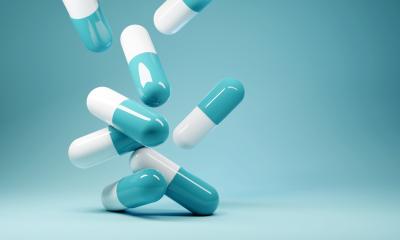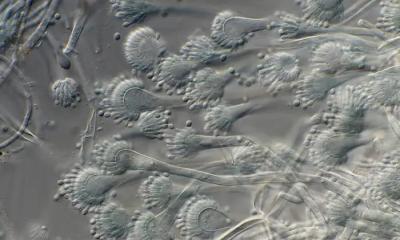Article • Difficult foe
Clostridium difficile: Fresh insight into an old pathogen
Hospital-acquired Clostridium difficile infection (CDI) is on the rise. Symptoms range from non-typical mild diarrhoea that can develop into pseudomembranous colitis up to a toxic megacolon, which often leads to death.
Report: Anja Behringer
Not only are there are hardly any efficient antibiotics nowadays, the use of antibiotics has turned out to be a significant risk factor in the spread of CDI. Since CDI occurs in many countries, rich and poor, an international team of researchers, supported by the German state of Lower Saxony, compared the incidence of CDI in countries with different levels of antibiotics use.
When patients carry the bacterium upon admission to the hospital and the infection develops during the patient’s hospital stay, the body not only has to fight the original disease, which was the cause for the hospital admission, but also CDI. Particularly older and immune-compromised patients are at risk: the extended hospital stay also translates into a considerable increase in treatment costs. CDI furthermore has a high recurrence rate and can develop into a chronic disease because most antibiotics destroy healthy as well as harmful bacteria, which can cause allergies, autoimmune, metabolic or psychological disorders, with the latter ones rarely diagnosed as being tied to the status of the colon.
According to the Robert Koch Institute, every year around 65 million adults worldwide suffer some form of gastrointestinal disease. While only one third of the people affected consult a doctor, those who do seek treatment should be aware of the risks associated with antibiotics. The German Gastroenterological Society (DGVS) points out that antibiotics themselves can cause diarrhoea and recommends limiting their use to certain cases, such as shigella or salmonella infections. While antibiotics do cure diseases they can cause long-term damage to the enteric flora – not to mention environmental damage.
For hospital therapy the DGVS Guideline recommends judicious use of antibiotics and strict compliance with hygiene rules. In particularly severe cases, the patient must be isolated – with unavoidable additional staff and treatment costs.
Despite many warnings from physicians there are only a few pharmaceuticals left whose efficacy has not been wasted by over-prescription. These drugs of last resort are limited to particularly severe cases. Understandably pharmaceutical companies are urged to develop new antibiotics. However, the call goes largely unheeded despite steadily progressing research. Obviously in the future an antibiotic has to attack the specific pathogen rather than damaging the entire microbiota. Indeed, an active ingredient for targeted use against Staphylococcus aureus already exists.
In Europe, the influx of young migrants may well increase pressure on the pharmaceutical companies to intensify efforts – particularly since the Zika virus, for example, is spreading without a vaccine or a therapy in sight.
25.07.2016







